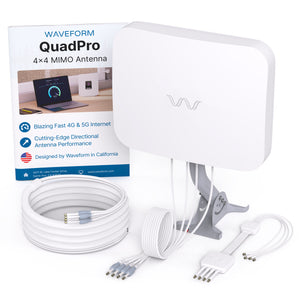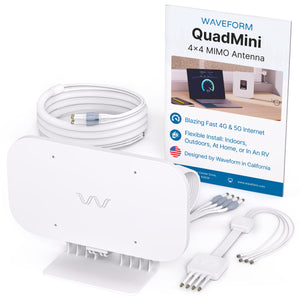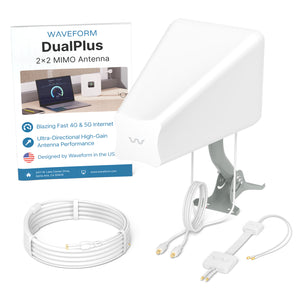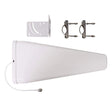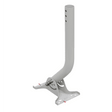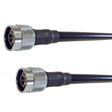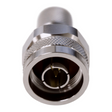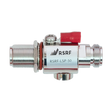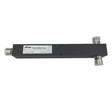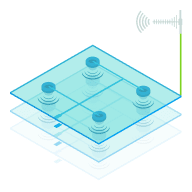Oklahoma's economy depends on energy production, aerospace, logistics, and large-scale agriculture. Well pads scattered across the Anadarko Basin, assembly lines in Tulsa, and mile-long warehouses along I-35 all struggle with the same challenge: WiFi cannot cover the distances and public carrier service often fades at the worst moment. A single connectivity outage can stall a drilling rig or halt robotic pickers, costing tens of thousands of dollars per hour.
Why Oklahoma Businesses Are Turning To Private 5G
Oil and Gas Sites: Horizontal drilling operations move constantly, yet SCADA data and video feeds must stay online. A private cellular network running in CBRS spectrum blankets the entire pad and can follow equipment down the lease road with ruggedized outdoor radios.
Manufacturing And Aerospace: From engine overhaul shops in Oklahoma City to composite-fabrication plants near Tinker Air Force Base, quality control tablets and autonomous vehicles require deterministic latency the public carriers cannot guarantee.
Logistics And Warehousing: Oklahoma's central location makes it a hub for regional distribution centers. Private 5G keeps handheld scanners, AMRs, and security cameras connected over hundreds of thousands of square feet without the co-channel interference that cripples WiFi.
Tribal Gaming And Entertainment: Casinos demand secure, PCI-compliant payment connectivity and flawless guest WiFi backhaul. A private network segments sensitive traffic and supplies carrier-class coverage across sprawling resorts.
Thunderstorms, wide temperature swings, and metal-clad buildings all add RF complexity that favors licensed or lightly licensed spectrum. With transmit powers up to 47 dBm EIRP, CBRS small cells punch through dense walls and rain that overwhelms indoor WiFi APs.
For readers focused on specific metro areas, we also maintain dedicated pages for Oklahoma City and Tulsa.
How Private 5G Compares To Other Wireless Options
Private 5G is simply LTE or 5G New Radio that you own, run on local spectrum, and integrate with your LAN. Unlike public 5G from AT&T, Verizon, or T-Mobile, every device on a private network authenticates against your own SIM database, traffic never leaves your firewall unless you choose, and there are no per-gigabyte fees.
WiFi 6 or the upcoming WiFi 7 can deliver high throughput indoors but struggles outdoors because FCC rules limit power to 4 W EIRP and 2.4 GHz and 5 GHz bands are crowded. CBRS spectrum at 3.55-3.7 GHz is protected, so a single small cell can cover several hundred thousand square feet with stable 100 Mbps throughput.
Latency also improves. With a local packet core the radio round trip time is typically 10-15 ms, compared with 40 ms on public networks that backhaul to a distant mobile switching center. For autonomous robots or time-critical HMI control loops, that difference is the gap between smooth operation and stop-and-go hesitation.
For a deeper dive into the radio architecture and spectrum rules, visit our Private Networks Guide.
Our Design And Deployment Process
- Rapid Site Snapshot: You send a floorplan, Google Earth pin, or even a hand-drawn sketch. Within three business days we return a preliminary RF heatmap, equipment count, and budget range.
- Detailed Engineering: If the fit looks promising, our engineers build a full propagation model using 3-D terrain and building data, then deliver a fixed price bill of materials, coverage maps, and an installation schedule.
- Turnkey Installation: Our technicians install small cells, edge servers, PoE switches, and fiber as required. Devices arrive pre-configured and SIM-provisioned so you see coverage on day one.
- Ongoing SLA: Remote monitoring, software upgrades, and 24-hour replacement of any failed hardware keep the network performing year after year.
Because we remain vendor neutral, the core might be Celona on one project and Pente on the next. Radios could come from Baicells or Airspan, while end-user devices might be Cradlepoint routers, Zebra scanners, or Honeywell handhelds. You get what best fits your operational goals, not what locks you into a single ecosystem.
Proven Experience In Complex RF Environments
Although you may know Waveform for in-building DAS, our teams spend every week solving difficult radio problems nationwide. A recent wireless deployment for Scotsman Ice Systems in Illinois, a commercial food-service equipment manufacturer, shows how we integrate with production lines without interrupting throughput. That project involved similar interference, metal structures, and uptime requirements to the environments we see across Oklahoma.
Transparent Pricing
Indoor coverage usually falls between one and two-and-a-half dollars per square foot turnkey, including radios, core, installation, and the first year of support. Outdoor sites are even more economical. In flat terrain we often cover a 1.5 mile radius with three or four CBRS radios for roughly 100 thousand dollars, an order of magnitude less than a Distributed Antenna System covering the same acreage.
Because CBRS spectrum is free to use after registration with the SAS database, operating expenses are limited to power, backhaul, and a modest annual support contract. You avoid the monthly per-SIM charges that quickly add up on public carrier plans.
Ready To Get Started?
Waveform delivers private 5G networks that simply work. From the first RF model to the handheld scanners your team carries, we handle everything. Call us at (800) 637-4049 or get a custom private 5g design and quote today. Better connectivity, on your terms, is only one conversation away.























